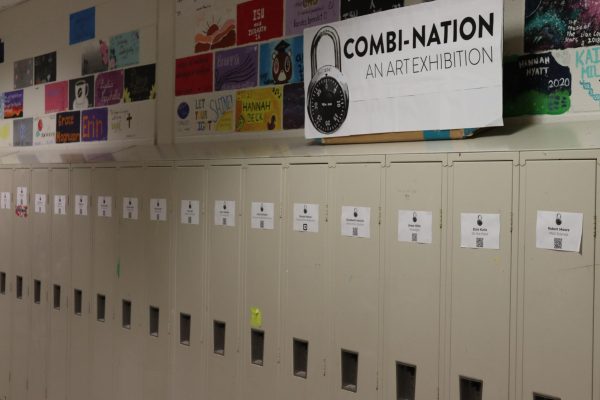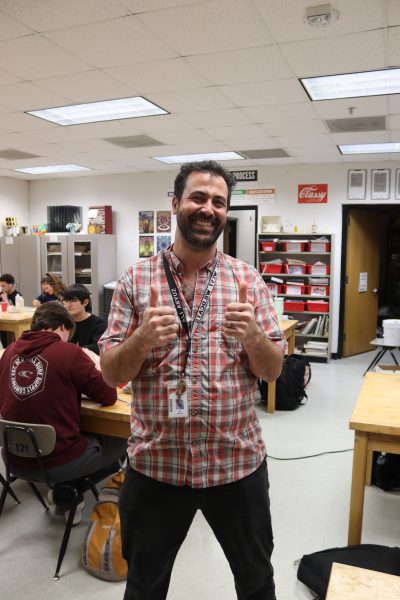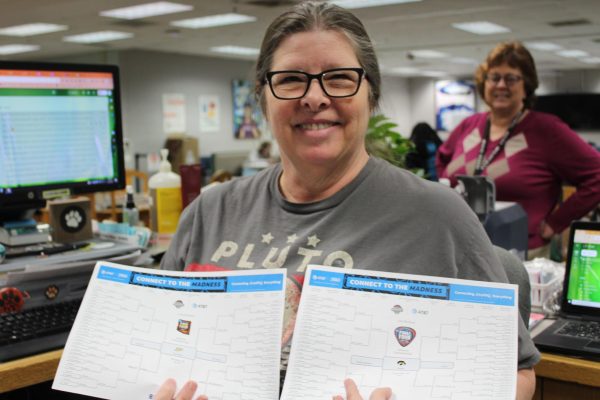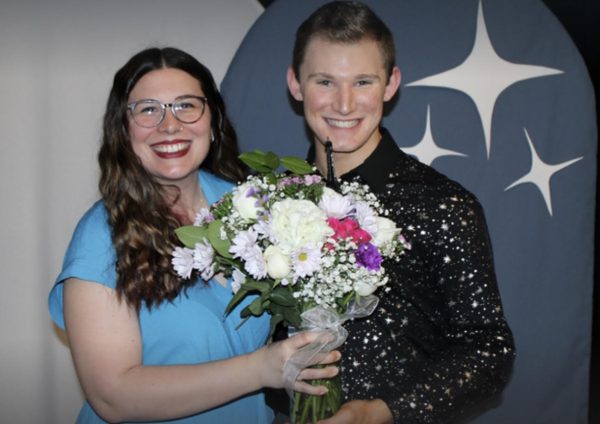Wildcats navigate the college application process
Normal West senior Haylee Sieg poses in front of Spartan Stadium in East Lansing, MI during her first college visit at Michigan State University. Photo courtesy of Kathy Sieg.
With graduation six months away, and the November 1 early decision deadline passing, Normal West seniors may be able get some much deserved sleep. However, while they wait for the mailman to deliver their future, juniors are taking their first baby steps into the light… of a college education.
When asked what she was thinking about in terms of college, junior Sarah Yoder said; “I have no idea where to even start.” However, similar to the way that “No Fear Shakespeare” assists Wildcat English students through Romeo and Juliet, the Normal West Paw Print is here to navigate the obstacles of the college decision process.
“I started the college search process pretty early, about halfway through my sophomore year,” said senior Haylee Sieg. “I went in having no idea what I wanted in a college: big or small, location, price range, or anything else.”
Haylee recommends doing a little research before all else, giving you a starting point for this long process and assisting in answering the following questions:
- Do I have an intended major? If so, what is it and what are the schools that can best prepare you for this?
- Will I be able to succeed in large lecture hall classes and communities, or do I think I will do better in smaller intimate classes and communities?
- How much can I afford? Although there are many scholarships available, it is still a conversation that needs to happen with those who may have saved money for your further education.
- Where do I want to be geographically?
- Is college the right path for me? Don’t forget to explore the armed forces, craftsmanship schools or two-year colleges.
Once you know the answer to some of these questions, visit websites like www.usnews.com or www.bigfuture.collegeboard.org, and explore some of the schools that appear; find statistics such as student to faculty ratio, undergraduate enrollment, campus size, yearly tuition and major/minor offerings. After synthesizing the information that you have gathered from researching, you should do two things: sign up to take the ACT at www.actstudent.org and schedule multiple college visits, which can be done on individual school websites.
The experience that you have at a college visit can influence your choice significantly, so visit every school that you possibly can. A school that might seem like your home for the next four years online, might not be where you truly belong. “After a shaky start with my first visit, I was terrified that college wasn’t going to be what everyone said it would be,” Sieg said, “however my next visit proved me wrong. I fell in love with the next school I visited and never wanted to leave. Although, I did visit an additional 10 campuses, ranging in undergraduate populations of 2,000 to 40,000, from two to seven hours away.” From this, Sieg learned that “you know when you know.”
When on a college visit you should try to visit with an admissions counselor, a current student, and go inside a dorm. Ask about clubs that you could get involved in, fraternities, sororities and any other social clubs that you might want to be apart of.
Once you feel like you’ve got a good idea of where you want to go, it’s time to start applying. You can use the common application that is accepted at most universities, by visiting www.commonapp.org or, you can fill out a school’s personalized application. First you will need to go to the guidance office, pick up a letter of recommendation form, and ask Mrs. Rudge to send your transcript to each school that you are applying to. This requires a form and three dollar fee per each transcript that you want to send, guidance can also send your ACT scores, however this can also be done at www.actstudent.org for a small fee of 12 dollars per school. Additionally, you will need an essay, these can be intimidating, however you just have to write one, typically. Senior Allyah Evans recommends having your favorite English teacher read over it before you submit it to avoid errors. The rest of your application is filled in with general information about yourself, so after you have your essay, letters of recommendation, transcript and ACT scores are ready to go, you can hit submit.
The next step is to wait. It usually takes about a month to hear back, and in the meantime it is recommended that you visit guidance for assistance in applying for/locating scholarships, which follows the same process. According to West alumni and Northern Illinois University freshman, Natalie Peacock, it can be overwhelming, “but now it seems like a small process and its not that hard to do.”













